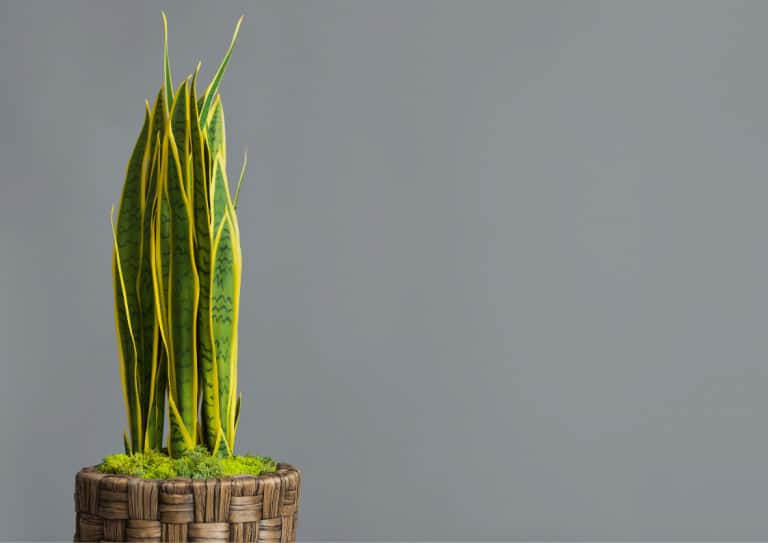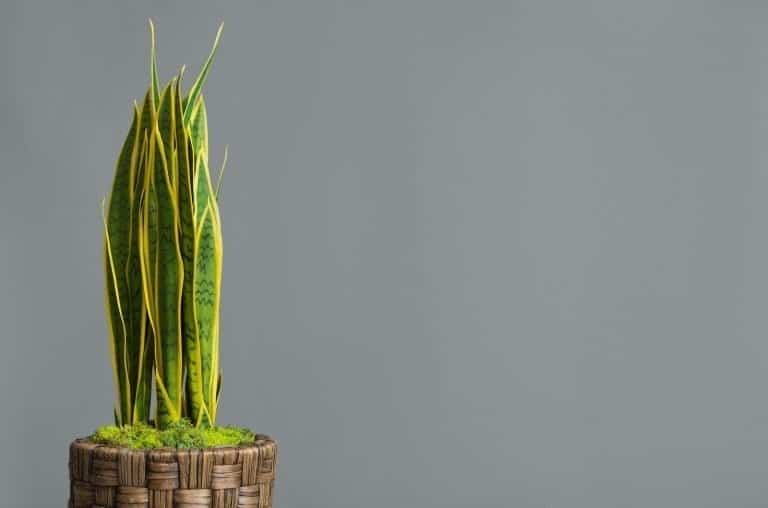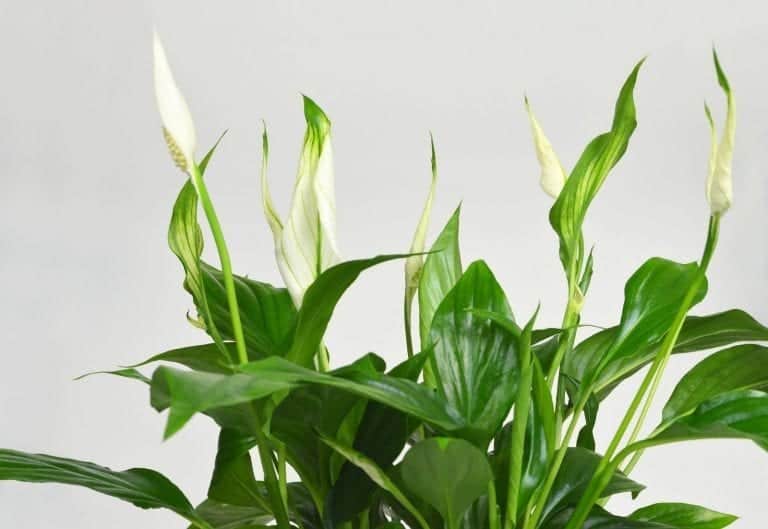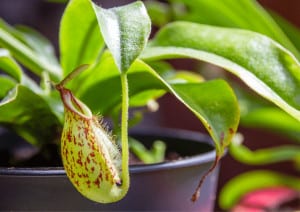The Best Plants To Keep On Your Office Desk
-
Chris Dosser
- July 12, 2021
If you buy something using the retail links in our articles, sometimes we earn a small affiliate commission. This does not impact the products we recommend.
With the huge choice of indoor plants available for sale these days it’s pretty easy to become quickly overwhelmed when searching for a desktop plant that’s just right for your office.
Some of the best looking plants can demand premium prices or be extremely challenging to care for.
The last thing you want to happen is for a #plantfail shortly after you welcome your new arrival to your workstation.
Through thousands of indoor plants available to the noisy world of plant care we’ve angled straight to the question“what are the best plants to keep on an office desk?”
To answer that question we’ve highlighted 4 beautiful plants that are great additions to your desktop, as well as reasons behind each choice.
Each plant on the list was chosen after careful considering of appearance, local availability and value for money in addition to having relatively easy care requirements.
In no particular order our top 4 best plants to keep on an office desk are…
- Croton plant (Codiaeum variegatum)
- Snake plant (Sansevieria sp.)
- ZZ plant (Zamioculcas zamiifolia)
- Peace lily (Spathiphyllum sp.)

Why do plants make fantastic office accessories?
Now the design and style and of a home office is of course extremely important, don’t get us wrong. However it’s the functionality of the design and benefits this brings which we get extremely excited about.
Houseplants are undeniably beautiful to look at however thankfully they also turn out to be pretty handy productivity aid.
This is just as well as a growing number of millennials are working from home with a deep seated desire to remain connected to nature despite living and working in busy urban environments.
Research has demonstrated that office workers whose environment is enriched by plants are happier and more productive, not to mention the increasing acceptance of the theory that connecting with nature is beneficial to human wellness.
From an empirical angle, in the presence of plants, computer tasks were completed 12% faster by study participants.
Research has demonstrated that office workers whose environment is enriched by plants are happier and more productive
The problem is however that there are now so many indoor plants to choose from. So much choice introduces the potential that consumers can become overwhelmed, and opt for plants that are chosen purely on appearance rather than placing consideration towards the conditions that each species will thrive in.
It’s a close call but I’ll admit that it wouldn’t be practical to move your entire office furniture around to benefit one or two new desktop plants. Of course there is no such thing as an office or a computer desk in the natural world.
Many of the plants which are classed as ‘indoor’ or ‘house’ plants have been squeezed into that banner because they are hardy enough to survive in the artificial conditions we have created.
When we think about offices in particular, there is going to be a huge variation in the influences of abiotic factors such as temperature, sunlight and other factors brought on by seasonal changes.
A high rise office block in Dallas in June is going to experience very different conditions to the same office block located in Stockholm in December.
With so many variables it makes it difficult to pin point exactly which plant would be perfect for you and your desktop.
Fortunately, with a little bit of background research and awareness of basic plant care it is easy to set yourself up to having a beautiful green desk, and who knows, perhaps the start of an indoor jungle!
Let’s introduce our top 4 plants for your desktop.
Croton plants bring color to an office desk

The croton plant family is extremely varied in appearance. In fact even the latin name given to this plant, Codiaeum variegatum, is related to the incredible variation (the variegatum part) of Codiaeum that have been cultivated.
The appearance of croton plants is striking with many cultivars displaying leaves that showcase vivid oranges, bright yellow and eye catching pinks against the background of otherwise dark green foliage.
In addition to colour, the shape of croton leaves is extremely diverse with leaf shapes that can be long, flat, thick, thin or even curled.
Growing naturally in open forests and scrub within tropical regions, croton plants prefer full sun, but depending on the species, some can also tolerate partial shade. A high humidity would also be another on the croton wish list could the plant speak.
Croton plants are ideal for…creating a screen between other desks or to provide shade from glaring sunlight.
Croton plant care
Sticking to the basics of house plant care, the croton plant likes to be homed on a desk that receives significant exposure to sunlight. You’ll notice that if the plant is restricted from receiving light the colours on its leaves won’t appear quite as vivid.
Watering in general should be approached with a ‘let the soil dry fully before soaking the soil’ mantra. You never want to see the leaves on the croton plant droop as that’s usually a sign that the plant is being exposed to too much water.
As the croton plant naturally thrives in a humid environment a humidifier would be helpful to create the perfect atmosphere however in an office with heating, air conditioning and doors/windows being opened and closed all day this might prove difficult. An occasional spritzing with water would be a great substitute.
The croton plant is known to drop leaves quickly should it experience stress and this protective measure has earned it a reputation of being a fussy plant.
Worry not if this is something you experience after buying a new plant. It’s likely just acclimatising to its new environment and will put out new leaves again once settled.
Snake plants bring modern shapes to an office

An office with plants is not compete without the distinctive outline of snake plant leaves pointing skywards.
‘Snake plant’ is the most common name given to plants of the Sansaveria genus with other common titles including mother-in-law’s tongue or Saint George’s sword.
In natural conditions the snake plant grows in arid deserts that receive very little annual rainfall and evolving to cope with these extremely hash conditions has made it a very hardy plant indeed.
Snake plants are ideal for…persisting with neglect and continuing to grow with minimal of care. Perfect if you want them to flank a computer monitor that is left unattended over the weekends and evenings.
Snake plant care
It’s tempting to leave this section blank as the snake plants are perhaps the most hardy and least demanding houseplants you could possibly introduce to your desktop. They can tolerate a wide range of temperatures, humidity and light conditions.
Being desert plants the root systems could be susceptible to rot owing if they experience overwatering so go lightly on that front.
If you’re devoted to learning more about plant care, Patch Plants offer a fantastic free course in exchange for your email address. From experience the videos are short, relevant and entertaining enough to make the hints and tips stick
ZZ Plants turn an office desk into a jungle

The ZZ plant (short for Zamioculcas zamiifolia) is also known as the zanzibar gem.
It’s a native to drought prone parts of Africa and and a relative new comer to the house plant scene. The sculpted and naturally shiny oval shaped leaves have made it a very popular addition to offices and homes all across the globe.
ZZ plants are ideal for…desks that are not shared with a colleague. The spectacular fronds of the ZZ can spread out and fill empty space as the plant grows.
ZZ plant care
The ZZ plant has become popular in recent years owing to its incredible resilience in the face of sub-standard care. The ZZ can tolerate neglect, drought and accepts low-light conditions.
It is not fond of direct sunlight at all and high temperatures such as those experienced on windowsills can cause scorching fairly easily. In fact, it’s best to situate your ZZ in low to bright indirect light.
In regards to watering, it’s a lot easier to cause damage to the plant by over watering as opposed to not watering enough. Even when the soil is bone dry to the touch the ZZs rhizomes will likely be storing enough nutrients and water for the plant to survive for some time.
To be safe, wait until the soil is totally dry before watering once again.
Peace lilies are for office workers who kill all other plants

In its natural environment the peace lily (not actually a true lily but called so due to its lily like appearance) is a tropical shade loving plant native to the rain forests of Central and South America.
The elegant blooms show in Spring and make a real statement.
Peace lilies are ideal for...removing air pollutants as it excels at removing alcohols, acetone, trichloroethylene, benzene and formaldehyde from its surroundings.
Peace lily plant care
Being naturally at home in a fast growing rainforest, the competition for light at ground level beneath the canopy is extremely high. Most plants, except for the quickest growing must be capable of surveying in partial shade or low light conditions.
The peace lily is one of those plants at home in partial shade and does not take kindly to direct sunlight. In fact if the light is too intense you’ll begin to observe the leafs curling.
Look to the foliage too for clues as to when a watering might be a good idea.
If the leaves aren’t able to hold their shape and begin to slump over then this is an indication that a watering is in order.
The soils of the peace lily should be moist but not wet. At our office we achieve this by letting the pot sit in a sink full of water until the top of the soil is damp, then allow any excess water to drain out of the pot.
Be mindful that there is a tendency for us to over water desktop plants out of misplaced love and care.
Keep away from desks that will experience extreme fluctuations in temperatures, such as those backed onto a window or immediately above a radiator.
Bonus care tip
When kept indoors, it’s easy for the leaves of houseplants to become dusty.
This dust will reduce the capability for the plant to photosynthesise and produce its own energy as it blocks sunlight from reaching the chloroplasts.
Many indoor plants, including the ones we’ve chatted about above have waxy leaves that can be cleaned of dust easily by gently wiping with a wet cloth or sponge. If you have a large collection of plants or a lot of leaves to clean it might be easier to just pop the dusty plants outdoors during a shower of rain.
You won’t regret administering this care as the cleaned leaves reduce the potential for disease and pests whilst the waxy smooth leaves help reflect sunlight and make a room appear brighter.

Chris Dosser
Co-Founder of Eden Indoors
Chris is a self-taught horticulturist with over a decade of experience caring for houseplants and creating lush, thriving indoor oases. He specializes in Monstera, and by self admission has a serious problem with buying and propagating rare indoor plants!
Similar Posts
How Long Does It Take Nepenthes To Grow Pitchers?
Nepenthes plants or pitcher plants are renowned for their carnivorous pitchers. When can you expect these pitchers to finally grow?
The Benefits Of Indoor Plants In The Office {Natural Decor}
Primarily by connecting us to nature, many studies have revealed benefits attained by keeping indoor plants. How might these be applied to your home office?



